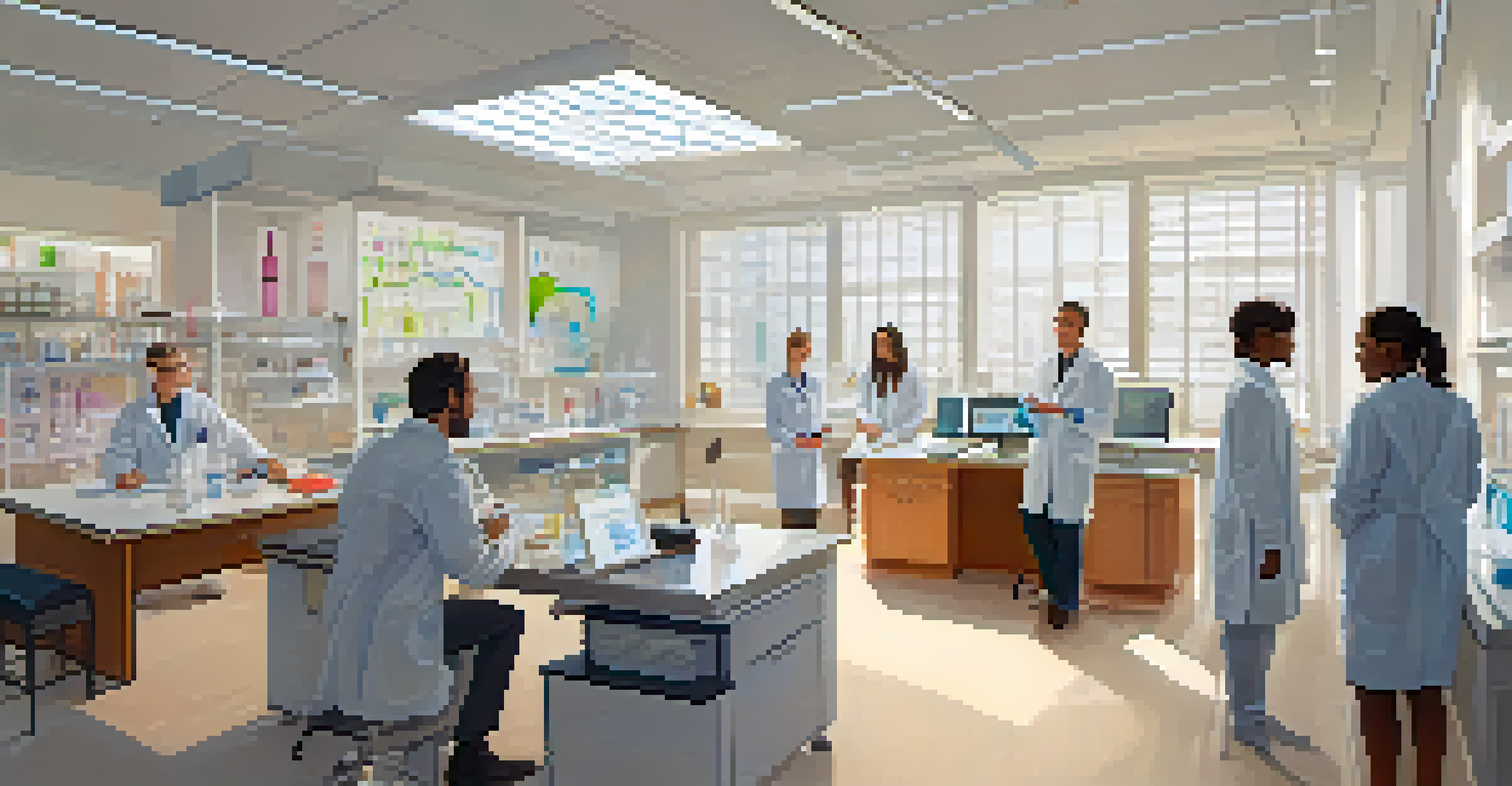The Role of the FDA in Regulating Entheogens and Research

What Are Entheogens and Their Historical Use?
Entheogens are substances that can induce altered states of consciousness, often used in spiritual or healing practices. Think of them as nature's tools for exploration, helping individuals connect with their inner selves or the universe. Historically, cultures across the globe have utilized these substances, from the indigenous peoples of the Amazon using ayahuasca to the ancient Greeks with their Eleusinian Mysteries.
Psychedelics are not a panacea, but they may be a powerful tool for healing and change.
These practices weren't just random rituals; they were deeply embedded in cultural and religious contexts. For many, entheogens facilitated profound experiences, offering insights into existence and human nature. However, as awareness of their potential benefits has grown, so too has the need for regulatory oversight.
In contemporary discussions, the conversation around entheogens is shifting. With increasing interest in their therapeutic potential, especially in mental health treatment, understanding their regulation becomes crucial. This is where the FDA steps in, navigating the balance between innovation and safety.
The FDA's Role in Drug Regulation
The U.S. Food and Drug Administration (FDA) is the government agency responsible for regulating food and drug products to ensure public safety. Their mission is to protect consumers by ensuring that medications are effective, safe, and manufactured according to strict guidelines. This regulatory framework is essential, especially when dealing with substances that can alter perception and consciousness.

When new drugs are developed, including entheogens, they must go through a rigorous approval process. This involves multiple phases of clinical trials, where researchers assess the drug's safety and effectiveness. The FDA evaluates the results to determine if the substance can be safely marketed to the public, a process that can take years.
Entheogens' Historical Context
Entheogens have been used historically in various cultures for spiritual and healing practices, facilitating profound insights into existence.
This lengthy process can be frustrating for researchers eager to explore the therapeutic potential of entheogens. Yet, this thorough investigation is vital for protecting individuals from potential harm. The FDA’s diligence ensures that when these substances are eventually approved, they come with a guarantee of safety for consumers.
Current Legislative Landscape for Entheogens
The current legal status of entheogens in the United States is complex and ever-evolving. While substances like psilocybin and MDMA have traditionally been classified as Schedule I drugs—meaning they are considered to have no accepted medical use—recent legislative changes are challenging this narrative. Several states and cities have begun to decriminalize or even legalize certain entheogens for therapeutic use.
The mind is not a vessel to be filled, but a fire to be kindled.
These changes reflect a growing recognition of the potential benefits of entheogens in treating conditions such as PTSD, depression, and anxiety. As the public's understanding shifts, advocacy groups are pushing for more research and the reclassification of these substances. This grassroots movement is essential in influencing policymakers and the FDA's approach to regulation.
As legislation continues to evolve, it's crucial for researchers and advocates to stay informed. Understanding the legal landscape can help in navigating the complexities of research and therapy involving entheogens. This awareness is key to unlocking their potential while adhering to regulatory frameworks.
FDA Guidance on Research Involving Entheogens
The FDA has begun to provide guidance for researchers interested in studying entheogens. This guidance outlines the necessary steps to conduct clinical trials, ensuring that researchers are aware of the regulatory requirements. While the process may seem daunting, the FDA's support helps facilitate important research in this field.
For example, researchers must submit an Investigational New Drug (IND) application before starting clinical trials. This application includes detailed information about the substance, study design, and how participants will be protected. By outlining these requirements, the FDA aims to promote safe and ethical research practices.
FDA's Role in Entheogen Research
The FDA regulates entheogens to ensure safety and efficacy, requiring rigorous clinical trials before any therapeutic use can be approved.
Researchers who navigate this process successfully can contribute to a growing body of evidence supporting the therapeutic use of entheogens. Through rigorous studies, they have the opportunity to demonstrate the safety and efficacy of these substances, potentially leading to new treatments for various mental health conditions.
Ethical Considerations in Entheogen Research
Ethics play a significant role in any research involving human subjects, especially with substances that can alter consciousness. Researchers must consider the potential impact of entheogens on participants, ensuring that their well-being is prioritized. This includes being transparent about the risks and benefits involved in the study.
Informed consent is a critical component of ethical research. Participants should fully understand what they are agreeing to, including the nature of the entheogen being used and the potential effects. This clarity helps build trust and ensures that individuals are participating voluntarily and with full awareness.
Moreover, ethical considerations must also extend to the cultural significance of these substances. Many entheogens have deep-rooted histories within certain cultures, and researchers must approach their study with respect. Balancing scientific inquiry with cultural sensitivity is essential in promoting ethical research practices.
Potential Therapeutic Benefits of Entheogens
Emerging research suggests that entheogens may offer therapeutic benefits for various mental health conditions. For instance, studies have indicated that psilocybin can help alleviate depression and anxiety among patients with terminal illnesses. This has sparked interest in how entheogens could transform mental health treatment.
Additionally, MDMA has shown promise in treating PTSD, with clinical trials demonstrating significant improvements in participants' symptoms. These findings highlight the potential for entheogens to serve as effective alternatives to traditional pharmaceuticals, which often come with side effects and varying efficacy.
Evolving Legal Landscape
Recent legislative changes are challenging the classification of entheogens, recognizing their potential therapeutic benefits for mental health conditions.
As the FDA continues to evaluate this research, the hope is that more entheogens may be approved for therapeutic use. This could pave the way for a new era in mental health treatment, offering individuals more options for healing and personal growth. With ongoing studies, the narrative surrounding entheogens is likely to evolve, making it a compelling area of exploration.
Future Directions for FDA Regulation of Entheogens
The future of FDA regulation concerning entheogens is filled with potential and challenges. As research progresses and more data emerges, the FDA may adjust its stance on certain substances, potentially leading to reclassification or approval for therapeutic use. This adaptability is crucial in responding to new findings and societal needs.
Moreover, as public interest in entheogens grows, so does the pressure on regulatory bodies to respond. Advocacy for more accessible pathways for research and therapeutic use will likely continue to intensify. This could lead to the FDA establishing clearer guidelines for researchers and healthcare providers working with entheogens.

Ultimately, the future of entheogen regulation will depend on a combination of scientific evidence, public opinion, and ethical considerations. As we move forward, the dialogue between researchers, regulators, and the public will be vital in shaping how these substances are viewed and utilized in the realm of mental health.